SERPINH1 regulates EMT and gastric cancer metastasis via the Wnt/β-catenin signaling pathway
- PMID: 32091407
- PMCID: PMC7066881
- DOI: 10.18632/aging.102831
SERPINH1 regulates EMT and gastric cancer metastasis via the Wnt/β-catenin signaling pathway
Abstract
In this study, we investigated the role of SERPINH1 in gastric cancer (GC) progression. GC patient tissues show significantly higher SERPINH1 mRNA and protein levels than normal gastric mucosal tissues. GC patients with high SERPINH1 expression are associated with lymph node metastasis and poor prognosis. SERPINH1 mRNA levels negatively correlate with E-cadherin mRNA levels and positively correlate with levels of N-cadherin, MMP2, and MMP9 mRNA levels. This suggests SERPINH1 regulates epithelial to mesenchymal transition (EMT). SERPINH1 expression was significantly higher in the HGC-27, AGS, MGC-803, and SGC-7901 GC cell lines than in the GES-1 normal gastric mucosal cell line. In SERPINH1-silenced SGC-7901 cells, survival, colony formation, migration and invasion were all reduced, whereas they were all enhanced in SERPINH1-overexpressing MGC-803 cells. Levels of WNT/β-catenin signaling pathway proteins, including β-catenin, Wnt2, GSK-3β, p-GSK-3β, NF-κB P65, Snail1, Slug and TWIST, were all reduced in SERPINH1-silenced SGC-7901 cells, and increased in the SERPINH1-overexpressing MGC-803 cells. Inhibition of SERPINH1 protein using Co1003 significantly decreased survival, invasion, and migration of GC cells. SERPINH1 thus appears to regulate EMT and GC progression via the Wnt/β-catenin pathway, making SERPINH1 a potential prognostic biomarker and therapeutic target in GC patients.
Keywords: SERPINH1; Wnt/β-catenin pathway; epithelial-mesenchymal transition; gastric cancer; therapeutic target.
Conflict of interest statement
Figures




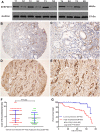
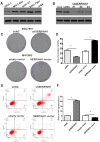
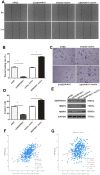
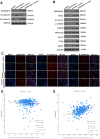
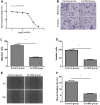
References
-
- Fitzmaurice C, Abate D, Abbasi N, Abbastabar H, Abd-Allah F, Abdel-Rahman O, Abdelalim A, Abdoli A, Abdollahpour I, Abdulle AS, Abebe ND, Abraha HN, Abu-Raddad LJ, et al., and Global Burden of Disease Cancer Collaboration. Global, Regional, and National Cancer Incidence, Mortality, Years of Life Lost, Years Lived With Disability, and Disability-Adjusted Life-Years for 29 Cancer Groups, 1990 to 2017: A Systematic Analysis for the Global Burden of Disease Study. JAMA Oncol. 2019. [Epub ahead of print]. 10.1001/jamaoncol.2019.2996 - DOI - PMC - PubMed
Publication types
MeSH terms
Substances
LinkOut - more resources
Full Text Sources
Medical
Research Materials
Miscellaneous

